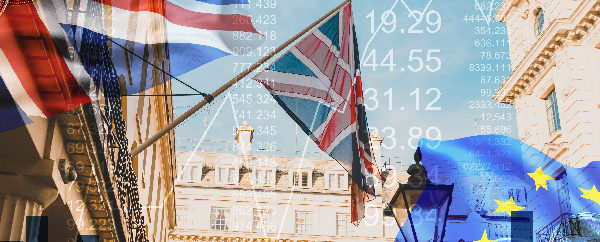“I don’t know art, but I know what I like,” is a philosophy many people adhere to when buying art for their own home or private collection.
Most art has no inherent value – with the exception of, for example, ornaments made of precious metals like gold and silver, where the metal content has value as a commodity.
But even so, much of the sale price of an artwork is based on the value of the artistry and not the materials, and ultimately depends only on how much someone is willing to pay for it.
This can make art investment challenging. Some big-name artists will always fetch a substantial sale price, while up-and-coming names should make bigger gains if you can find them early in their career.
Beyond that, it can be difficult to track the fundamentals of the broader art investment market – so how can you make it work?
Double-digit potential
Analysts generally agree that there is significant potential in art investment – in 2018 by November alone, the Art Market Research Art 100 Index was up 10.6% according to a Wall Street Journal report.
Even without December’s results, art investors saw double digit growth that outpaced every other category.
So what stops more investors from putting funds into art? Perhaps it is the contradiction between buying art because you like it, as opposed to investing based on a tight risk-reward analysis and predictable gains.
Getting started in art investment can take considerable capital, at the very least several thousands of pounds or dollars, and the most valuable collections that go up for auction are usually the result of decades of dedicated work.
Certainly art investment is not a quick buy-in, sell-out process to add a few percent to the value of your portfolio in the space of 6-12 months.
Playing the long game
With this need for a long-term approach to art investment in mind, this means investors face a purchase of an asset they may intend to hold for 5-10 years or more, based on little to no historic data.
You can look at the art market as a whole to see if prices are trending up or down – and overall on an annualised basis, they have been heading upwards for some time now – but ultimately when buying an individual artwork, you’re speculating on a volatile market.
The variety of different ways to sell art make it even more difficult to calculate a single, accurate expected selling price.
Art auctions make the headlines because these are where the eye-watering sums of money tend to be paid, in a public place where others can report the news.
But behind closed doors, art dealers, galleries and the artists themselves are also selling works every single day, adding to the complexity and real-world value of the market.
And finally, some of the market’s value comes from the artworks that rarely – if ever – come up for sale, but whose perceived value if they were to be sold can have an influence on other works by the same artist and on the wider market as a whole.
Private or public?
It’s not just the auctions that take place in a more public setting; in many cases the most desirable, significant and therefore valuable artworks are sold or donated to galleries and museums.
Once in a museum collection, it is unlikely that a major artwork will return to private ownership in the sense of an individual investor’s home collection.
Again, this makes the remaining privately owned works by that artist a scarcer commodity, pushing up the prices of works that were once considered less desirable.
Without physically destroying any art, this pushes the balance from supply to demand, taking the price of available works with it.
Ironically, this is driven in part by high net worth individuals trying to offset their taxes by buying art pieces for massive prices and then donating them to their own not-for-profit foundations.
This allows them to avoid paying tax on the purchase price, but moves the art into a less private form of ownership at the same time, contributing towards the inflationary effect described above.
In fact the impact of inflation makes this a self-supporting technique, as the ever-growing prices of the artworks involve lend themselves to ever-larger tax write-offs along the way.
The true price of art
For every collection that raises millions at auction, there are private collectors sitting on names that never found the acclaim they expected.
Even if those artworks hold their original value, the fees associated with buying, storing and later selling them can add up to a net loss at resale.
On a single purchase at auction, fees might include a buyer’s premium of around 25%, plus VAT or sales tax, shipping and handling, taking a bite out of the buyer’s budget that adds up to almost a third – and that’s before the work is insured and stored.
In many cases it is more sensible for investors to hold on to their collection in the hope that it will somehow gain value in the future, rather than to dispose of it at a loss.
Because of this, there is a bias towards only profitable pieces going to market, with no way to calculate a true underlying rate of appreciation or depreciation for art as a class in its entirety.
The more investors focus on selling their most profitable pieces, the more apparent this bias becomes – which raises the question of how many investors are achieving those double-digit headline gains.
Once all of the fees and costs are taken into account, a true figure for appreciation in art’s value in general could be closer to 5-6% – but a single work may need to gain around 80% just to break even when selling.
That means holding on to works for over a decade just to cover costs and is a good indication of why those valuable estates at auction are often decades in the making.
For everyday investors, the real challenge is to profit from art over the short to medium term without allowing costs and fees to turn double-digit gains into substantial losses – and in order to do that, you need a strategy that goes beyond just buying what you like.
https://www.artsy.net/article/artsy-editorial-often-ignored-problem-buying-art-investment
https://www.wsj.com/articles/the-best-investments-of-2018-art-wine-and-cars-11546232460
Disclaimer: The information provided here is not investment, tax or financial advice. You should consult with a licensed professional for advice concerning your specific situation.




